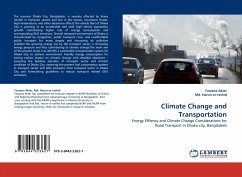Sea Water rise due to climate change is a serious global threat, the rate of sea level rise was faster from 1993 to 2003: about 3.1 (2.4 to 3.8) mm per year, as compared to the averaged rate of 1,8 (1.3 to 2.3) mm per year from 1961 to 2003 (IPCC, 2007); and significantly higher than the average rate of 0.1 to 0.2mm/ yr increased, recorded by geological data over the last 3,000 years. Advanced Land Observation system phased-array Synthetic-Aperture Radar (ALOS PALSAR) data, has pointed out that pronounced regional warming in Antarctica Peninsula has triggered an ice shelf collapse, and in turn leading to 10 fold increase in Glacier Flow and rapid ice sheet retreat. This sector could raise sea level by 1 m. If the projected rise in sea level due to Global warming occurs, then the vulnerability to tropical cyclone storm surge flooding would increase. Anthropogenic warming and sea water rise will continue for centuries due to the time scales associated with climate processes and feedback, even if Green House gas concentration were to be stabilized.
Bitte wählen Sie Ihr Anliegen aus.
Rechnungen
Retourenschein anfordern
Bestellstatus
Storno








